Parish Newsletter 3rd May 2020
Please find a copy of the Parish Newsletter below for Sunday 3rd May. Enclosed you will find details of resources, prepared by Deacon Axcel to support your children with the Sunday liturgy of the Mass.
Please find a copy of the Parish Newsletter below for Sunday 3rd May. Enclosed you will find details of resources, prepared by Deacon Axcel to support your children with the Sunday liturgy of the Mass.
May Procession 2020
Due to our school closure we will be unable to have our usual May Procession. However we would like to try and have a remote celebration to honour Mary during this month of May.
Please send a photo or 2 second video clip of your child presenting/holding up a flower/blossom, to your class email address. We will then use the images to make a virtual May Procession. It would be lovely if parents would also like to join us!
The dead line to receive photos/video clips is Friday 1st May at 12noon.
The May Procession will take place on Monday 4th May at 11am.
Access via all the class blogs
Thank you for your continued support.
The Pope Paul Staff Team
Dear Parents and Carers,
Thank you for the fantastic learning opportunities that you are providing for your children at home. Both Mrs Gymer and I love looking at your posts on Tapestry. It’s so wonderful to see the children in photos and hear their little voices on video. We are both really missing them and find Tapestry is really helping us to get through this strange and tricky time.
Children, if you have any new interests, or you want to find out more about a topic, please ask an adult to email me with your idea for the weekly learning focus and I may choose it! yearR@popepaul.herts.sch.uk
*Remember, you do not need to do everything on this overview- even if you just pick one or two things to do from each area over the week, you will be doing a fabulous job!
Thank you for your continued support and have a great week!
Mrs Theo
__________________________________________________________________
This week’s theme is ‘Food Glorious Food!’
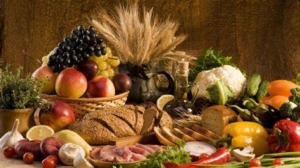
Personal, Social and Emotional Development (PSED)
Communication and Language
Physical Development
Understanding the World
Expressive Arts and Design
Maths
Literacy
Encourage your child to read and write for purpose:
RE
To show that RE is a special learning time, we always light a candle to mark the beginning of lesson and ask ‘Who is with us when we light the candle?’ and ‘Who do we learn about in our RE lesson?’
We then say the school’s Mission Prayer together.
Remind the children that our new topic is called ‘Easter to Pentecost’.
Retell the story of the Resurrection. Continue to develop your child’s understanding of the Resurrection by making and decorating some models or pictures of symbols of new life: eggs, butterflies, rabbits and plants. Explain their connection to the new life of the Resurrection.
If possible, plant some bulbs/seeds –connect to new life
_________________________________________________________________________________
Ongoing Further Activities and Information
Ongoing Maths Activities – try at least one a day
| · Go on a walk and count how many rainbows or teddies you can see in the windows of different houses. Which road has the most?
· Counting objects within the house-This could be anything as simple as counting the cutlery in your drawer! · Looking for shapes in the environment- Can you see the rectangle on the table? The square on the oven door? How many edges does the bookcase have? Can you name the 3D shape that your cereal box is? · Using positional and directional language- Where is the teddy? On top, under, behind, in front of, next to. inbetween etc. Use directions to get from one room to another e.g. walk two steps forward, turn left… · Capacity-Fill the bath and give them your child whichever containers you have at home (jugs, Tupperware). Encourage the language of full, nearly full, half full, nearly empty, empty. Will the water to fill this container fit into another container? · Time- Create an ‘at home’ timetable together. What shall we do first? What shall do next? What shall we do at the end of the day? Begin to recognise o’ clock times on a clock. · Money- Empty your purse or money box. Learn the names of the different coins. Use 1p coins to count and add with. · Patterns- Use every day objects around the home to create patterns e.g. pen, fork, sock, pen, fork, sock. Can the continue and copy your pattern? Can they make their own pattern. · Length and height- Find three objects from around the home. Can they order them from smallest to largest? Use your feet to measure the length of items in your home (e.g the sofa). How many feet long is it? Counting objects within the house. This could be anything as simple as counting the cutlery in your drawer! · Addition using objects found within your home- If we have 5 spoons and 3 forks, how many do we have altogether? Include missing numbers e.g I have 5 buttons. How many more do I need to make 10? · Subtraction using objects found within your home- If we have 7 biscuits and I eat 2 how many biscuits are left? · Subitising (recognising how many without counting) the amount of objects in a set. How many candles are on the fireplace? How many plates are on the table? Etc · Watch a Numberblocks episode each day at: BBC iplayer or CBeebies. · Practise counting up to 20. This can be done through playing hide and seek, singing number songs, chanting, board games etc. · Write out the digits 0 – 9. · Sing Number songs to practice counting, reciting numbers in order, one more, one less using number songs: Five Little Ducks, Five Little Men, Ten Green Bottles · Practise counting backwards from 20. · Look for the numbers on the doors of houses. Do the numbers get bigger or smaller as you go up and down the street? · Listen to a number song from the CBeebies website. After listening to them, watch again and sing along if you can. Talk about the maths you can see in the video clip. · Look out of the window and count how many houses or buildings can be seen · Explore weighing and measuring food on the kitchen scales. Ask, what happens as you place more on the scales? · Look for numerals on packaging you find around the house. Can your child recognise the numerals and count out a matching amount?
|
Maths Websites
https://www.topmarks.co.uk/maths-games/5-7-years
https://matr.org/blog/fun-maths-games-activities-for-kids/
https://www.primarygames.com/math.php
https://www.bbc.co.uk/cbeebies/topics/numeracy
https://apps.mathlearningcenter.org/geoboard/
.
White Rose Maths has prepared a series of five maths lessons for each year group from Year R-8. They will be adding five more each week for the next few weeks. Every lesson comes with a short video showing you clearly and simply how to help your child to complete the activity successfully. Click on the link to find out more.
https://whiterosemaths.com/homelearning/
Independent writing
Parents, please encourage your child to write as often as you can, using their phonics and tricky word knowledge. Please take a close up picture of any writing they do and upload it to Tapestry. If they are forming their letters incorrectly, the wrong way around or hold their pencil the wrong way, please correct your child immediately. Please refer to the inside cover of their original home phonics book for the handwriting phrases, if you find yourself in this position.
Phonics
Please continue to practise all of Phase 2 and Phase 3 sounds and tricky words on a daily basis.
Phase 2 tricky and high frequency words
Read: is, it, in, at, and, the, to, no, go, I, on, a
Phase 3 tricky and high frequency words
Read: he, she, we, me, be, was, my, you, they, her, all, are
Write: the, to, no, go, I
For those children who know all of the above, please begin to teach the following words from Phase 4. (Consolidating phase)
Phase 4 tricky words
Read: said, so, have, like, some, come, were, there, little, one, do, when, out, what
Information about Phase 4 Phonics
During the summer term and only when the children are secure in Phase 2 and 3, Reception usually move over to the Phase 4 stage of Letters and Sounds. When children start, they will know a grapheme for each of the 42 phonemes. They will be able to blend phonemes to read CVC (consonant-vowel-consonant) words and segment in order to spell them.
Children will also have begun reading straightforward two-syllable words and simple captions, as well as reading and spelling some tricky words.
In Phase 4, no new graphemes are introduced. The main aim of this phase is to consolidate the children’s knowledge and to help them learn to read and spell words which have adjacent consonants, such as trap, string and milk.
If your child knows all of the Phase 2 and 3 sounds consistently and the high frequency and tricky words, then please begin to introduce your child to the Phase 4 online games and activities.
Important- Please be aware that if you go onto this phase before they are ready, it may cause your child to have issues with spelling later on in their school life.
The following websites are fantastic for practising phonics phases, word recognition and sentence reading.
https://www.teachyourmonstertoread.com
https://www.phonicsplay.co.uk/freeIndex.htm
http://www.familylearning.org.uk
https://www.spellingcity.com/spelling-games-vocabulary-games.html
Twinkl also have some great phonics and cross curricular resources and are also currently free if you follow these instructions:
Go to https://www.twinkl.co.uk/offer and enter the code: UKTWINKLHELPS
Phonics Play in particular is a fantastic resource for the actual teaching of the Letters and Sounds program. It is currently free to parents due to the Coronavirus situation.
Reading
As well as Oxford Owls, Harper Collins Publishers are now giving parents free access to their Big Cat e-books and activities, which are also organised according to book band colour.
Go to Collins Connect and click on the Teacher portal and enter:
Username: parents@harpercollins.co.uk
Password: Parents20!
and then click Login.
To login to Oxford Owl please continue using the school’s login.
Username:popepaul2020
Password:Ilovereading2020
You must put the detail into Class Login not the general login otherwise it will not work. Once logged in, you can go into the bookshelf. Select 2 books from your child’s book band colour and practise reading them every day. There are two activities to go with each book and parent tips at the end of the book. If you click on the parents section too, you should find even more books and resources.
Memories of sunny summer days…
Have a lovely weekend everyone!
Enjoy the video.
Dear Parents and Carers,
We are pleased to tell you that from Monday 27th April, your child can receive a daily live phonics lesson whilst schools are closed. Phonics is the way we teach children to recognise the sounds in words. It helps your child to learn to read and is an essential part of your child’s education.
During this term, you will be able to access the daily phonics lesson, by clicking on the new Department for Education ‘Letters and Sounds for home and school‘ YouTube Channel . All lessons are introduced by celebrities, including children’s TV presenters,which adds an exciting addition to the lessons.
There are three sets of daily lessons to choose from and we suggest your child starts with one set of lessons most suitable to their year group and reading ability. If you’re not sure which lessons your child should watch or your child finds the lessons too difficult, please email Mrs Theo if your child is in Reception or Mrs Carey if your child is in Year 1.
New lessons will be uploaded Monday to Friday at the times below during the summer term and available to watch throughout the summer term on the Letters and Sounds YouTube Channel
| 11 am* | Learning to blend | For children in Reception and Year 1 who need extra practice sounding and reading words such as ‘tap’ ‘cap’ ‘mat’ ‘pat’ |
| 10 am* | Reception Summer term | For children who can confidently blend and read words such as ‘fish’ ‘chat’ and ‘rain’ |
| 10:30 am* | Year 1 Summer term | For children who can confidently blend and read words such as ‘stamp’ ‘chair’ and ‘green’ |
After watching each lesson, we encourage you to read aloud to your child and listen to your child read. More information about phonics and how to help your child can be found in the parent/carer video guide below.
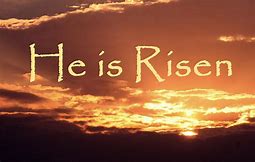
Dear Parents and Carers,
Welcome back!
I hope you all had a wonderful Easter and a well deserved break.
As it is St George’s Day on Thursday, this week’s learning theme is derived from the story of ‘St George and the Dragon’.
I would also like the children to focus on communicating with others.
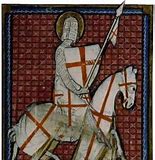
Please start the week by reading/ listening to/ watching the story of St George and the Dragon. There are lots of versions of the story.
This is a nice simple version of the story: https://learnenglishkids.britishcouncil.org/short-stories/george-and-the-dragon
Please also watch the two film clips about St George’s Day on this page:
https://www.bbc.co.uk/cbeebies/watch/lets-celebrate-st-georges-day
Personal, Social and Emotional Development (PSED)
Communication and Language
Physical Development

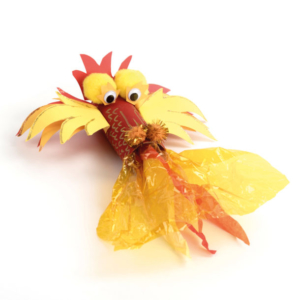
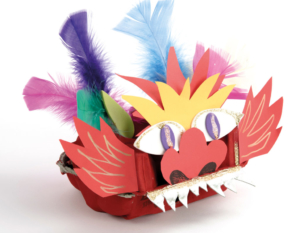
Understanding the World
Expressive Arts and Design
Maths
Focus: number recognition 1-20.
Does your child recognise all numbers within 20? If not, please continue to work on these numbers through playing number games- board games such as snakes and ladders, online games, finding numbers in the environment etc.
If your child does recognise all numbers within 20, please reinforce previous learning by asking your child to place numbers 1-20 in order, counting out objects of a given amount,(for example, ‘Please count out 18 stones from the pile and place it on the number 18’) and asking them to tell you the number that is one more or one less than a given number from 1-20.
On-going Maths Activities – try at least one a day
Maths Websites
https://www.topmarks.co.uk/maths-games/5-7-years
https://matr.org/blog/fun-maths-games-activities-for-kids/
https://www.primarygames.com/math.php
https://www.bbc.co.uk/cbeebies/topics/numeracy
https://apps.mathlearningcenter.org/geoboard/
.
White Rose Maths has prepared a series of five maths lessons for each year group from Year R-8. They will be adding five more each week for the next few weeks. Every lesson comes with a short video showing you clearly and simply how to help your child to complete the activity successfully. Click on the link to find out more.
https://whiterosemaths.com/homelearning/
Literacy
Parents, please encourage your child to write as often as you can, using their phonics and tricky word knowledge. Please take a close up picture of any writing they do and upload it to Tapestry. If they are forming their letters incorrectly, the wrong way around or hold their pencil the wrong way, please correct your child immediately. Please refer to the inside cover of their original home phonics book for the handwriting phrases, if you find yourself in this position.
Phonics
It is highly important that your child practises their letter sounds and tricky words and applies them through a reading and writing activity daily. Reading will help improve their vocabulary and a child’s academic success depends upon the ability to read and write and so this should be a priority.
Please continue to practise all of Phase 2 and Phase 3 sounds and tricky words on a daily basis.
Phase 2 tricky and high frequency words
Read: is, it, in, at, and, the, to, no, go, I, on, a
Phase 3 tricky and high frequency words
Read: he, she, we, me, be, was, my, you, they, her, all, are
Write: the, to, no, go, I
For those children who know all of the above, please begin to teach the following words from Phase 4. (Consolidating phase)
Phase 4 tricky words
Read: said, so, have, like, some, come, were, there, little, one, do, when, out, what
Information about Phase 4 Phonics
During the this term and only when the children are secure in Phase 2 and 3, Reception usually move over to the Phase 4 stage of Letters and Sounds. When children start, they will know a grapheme for each of the 42 phonemes. They will be able to blend phonemes to read CVC (consonant-vowel-consonant) words and segment in order to spell them.
Children will also have begun reading straightforward two-syllable words and simple captions, as well as reading and spelling some tricky words.
In Phase 4, no new graphemes are introduced. The main aim of this phase is to consolidate the children’s knowledge and to help them learn to read and spell words which have adjacent consonants, such as trap, string and milk.
If your child knows all of the Phase 2 and 3 sounds consistently and the high frequency and tricky words, then please begin to introduce your child to the Phase 4 online games and activities.
Important- Please be aware that if you go onto this phase before they are ready, it may cause your child to have issues with spelling later on in their school life.
The following websites are fantastic for practising phonics phases, word recognition and sentence reading.
https://www.teachyourmonstertoread.com
https://www.phonicsplay.co.uk/freeIndex.htm
http://www.familylearning.org.uk
https://www.spellingcity.com/spelling-games-vocabulary-games.html
Twinkl also have some great phonics and cross curricular resources and are also currently free if you follow these instructions:
Go to https://www.twinkl.co.uk/offer and enter the code: UKTWINKLHELPS
Phonics Play in particular is a fantastic resource for the actual teaching of the Letters and Sounds program. It is currently free to parents due to the Coronavirus situation.
Reading
As well as Oxford Owls, Harper Collins Publishers are now giving parents free access to their Big Cat e-books and activities, which are also organised according to book band colour.
Go to Collins Connect and click on the Teacher portal and enter:
Username: parents@harpercollins.co.uk
Password: Parents20!
and then click Login.
To login to Oxford Owl please continue using the school’s login.
Username:popepaul2020
Password:Ilovereading2020
You must put the detail into Class Login not the general login otherwise it will not work. Once logged in, you can go into the bookshelf. Select 2 books from your child’s book band colour and practise reading them every day. There are two activities to go with each book and parent tips at the end of the book. If you click on the parents section too, you should find even more books and resources.

RE
To show that RE is a special learning time, we always light a candle to mark the beginning of lesson and ask ‘Who is with us when we light the candle?’ and ‘Who do we learn about in our RE lesson?’
We then say the school’s Mission Prayer together.
Parents, please begin by re-capping the stories learnt in our previous topic- ‘Lent to Easter’. -Jesus arriving in Jerusalem, washing feet, last supper and Good Friday.
Remind your child about any religious experiences you shared as a family during the Easter holiday.
Tell your child that our new topic is called ‘Easter to Pentecost’. Explain that in school, the new colours on the prayer table and RE display would change from purple to the colours of the Easter season, which are gold and white.
Tell the story of the Resurrection from a child’s bible using pictures and props and discuss Jesus as a special person – God in human form.
Make models of the empty tomb from any material such as:
Salt dough- Follow this very simple recipe here: https://www.bbcgoodfood.com/howto/guide/how-make-salt-dough-recipe
Paper Mache- Follow this very simple method if you do not have any glue:
https://www.youtube.com/watch?v=OTKQGMy1Joo
Materials found in the garden such as earth, sticks and stones.

When you have finished, ask your child to tell you the story of the Resurrection and discuss how special Jesus must be.
Ask your child: What happened to Jesus in the story? Is Jesus like us? Why / why not? What can you tell me about the Resurrection? How do you think Mary felt?
Remember, you do not need to do everything on this overview- even if you just pick one or two things to do from each area over the week, you will be doing a great job!
Finally, if you need to get in touch with me about your child’s learning, I will be picking up emails between the hours of 8.50am and 3.30pm Monday- Friday.
The email address is:
Thank you for your continued support and have a great week!
Mrs Theo
Holy Week Quiz for FRHC. Primary School (Key Stage 2).FK.01.04.2020
Holy Week Quiz Younger Children (Key stage 1).Fk.01.04.20
Message from Francesca Khaliq at Our Lady and St Vincent Church
Dear families,
I hope you are all keeping safe and well during this unsettling time.
As it is Holy Week next week I am attaching some quizzes for the children to do, there is one for key Stage 1 (reception to Year 2) and Key Stage 2 (Year 3 to Year 6). Entries will need to be sent back to Deacon Axcel by Tuesday 14th April at pbalpha@rcdow.org.uk, so just put the answers into an email, or you can print the quiz and fill it in and post them to the parish, whatever is easier for you. Axcel will put all the names into a hat and pick a winner, the prize is a £20 voucher, so worth having a go, please encourage them to take part; the answers will be emailed out when the winner is announced. There is a quiz for older children in secondary school (Key Stage 3), you can request this quiz by emailing pbalpha@rcdow.org.uk and Deacon Axcel will email it to you, there are £20 gift vouchers for the winner of each of the three quizzes.
It is wonderful that we have the capability of live streaming (remember you can access our live streaming by logging on to our website olasv.org.uk and clicking on live streaming link) but sad to see the benches empty without all our wonderful parishioners. So we would like you all to send a photo of your family so Fr Shaun and Deacon Axcel can print them out and stick them on the benches in church, so we are all there together. So please take a family photo and email it to pbalpha@rcdow.org.uk
I have prepared a Children’s Liturgy for the children to do on Good Friday at home, all the information has been emailed to parents via schoolcomms, there is a run through and 3 attachments for the liturgy, have a read through and see if you can spend some time with the children to do this on Good Friday. Please don’t feel obliged to do it all if you can’t or if you don’t have the resources but have a look before Friday to see if you can get anything ready in advance, you will just need access to a laptop/IPad or mobile to watch the videos and access the music.
I pray that you and your families keep safe and well during this time.
God bless
Fran
Francesca Khaliq
Catechetical Co-ordinator
Our Lady & St Vincent
Wishing you all every good wish for the Easter break!
The theme of this year’s Childnet film competition is:
Think about all the things we love to do online. Create a film or storyboard that explains why we want an internet that allows people to feel free and safe online and how we can can make this happen.

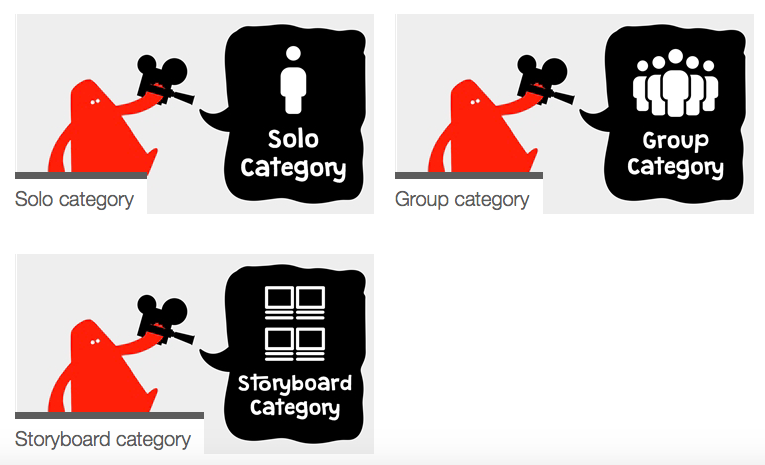
Childnet have released packs to give more information about the competition and to help you to plan and make your films at home. All details can be found at https://www.childnet.com/resources/film-competition/2020
Childnet understands that young people may not have access to specialist equipment at home but don’t let that stop you. Get creative with the technology you have, including phones and tablets, or enter the storyboard category, which doesn’t require any film making equipment.
I am sure there are some great filmmakers in our midst.
Good luck and happy filmmaking.
From Miss Davey
Computing Subject Leader
Good Morning,
I hope you are all well. I thought you might like to try this PE version of snakes and ladders with your family instead of (or in addition to – if you’re feeling super fit!) joining Joe Wicks this morning. There are many different challenges included. All you need is a dice, appropriate clothing, water and a safe space. Enjoy and send me some pictures of you having fun if possible.
Love Miss Pringle
This site uses cookies. By continuing to browse the site, you are agreeing to our use of cookies.
OKLearn more